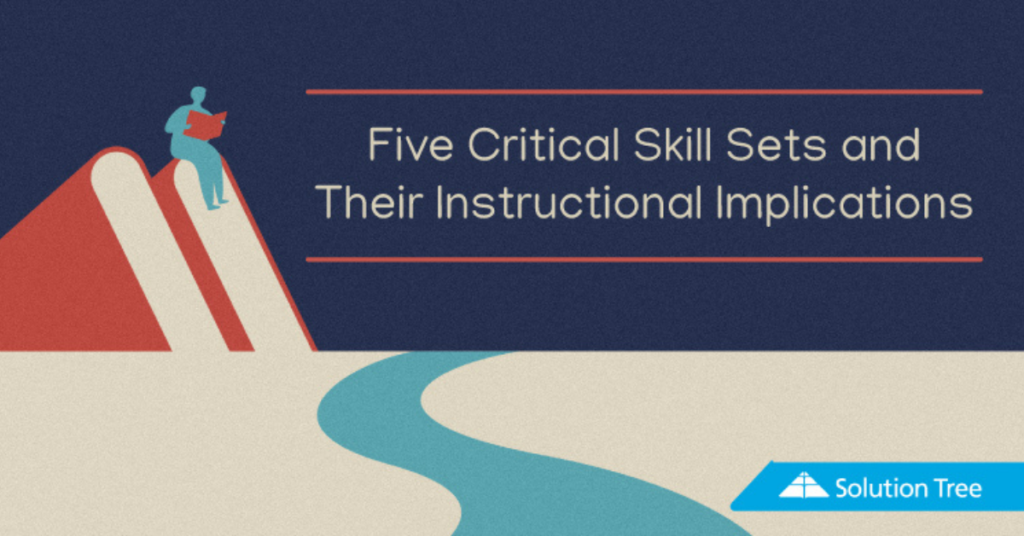From major societal and technological shifts to climate change, AI, and more, students today live in a rapidly transforming world.
In addition to metacognitive skills, I believe there are five key “learning to learn” skill sets that will increase school success and better prepare students for a lifetime of change.
- Develop understanding
- Conduct research
- Think critically and creatively
- Communicate effectively
- Collaborate
As students learn and practice these skills, they’ll also learn attitudes and behaviors that they will need for the future, such as curiosity, perseverance, learning from error and failure, risk-taking, and improving their work.

Activities That Develop the Five Skill Sets
Develop understanding
Guided concept development and attainment activities provide students with opportunities to define, sort, group, categorize, classify, label, and build relationships among multiple sets of information, ideas, and data.
Read for understanding strategies include before/during/after reading strategies, second-draft reading, interpretive discussions of text, reflective logs, and many other similar methods.
Conduct research
In search activities, students are asked to find one or more readings, data sources, or videos that supplement a current learning situation, such as finding and using helpful search terms, determining which sources of information are reliable, and reading and interpreting data meaningfully.
Close reading strategies enable students to read more deeply. Students are asked text-dependent questions that enable them to justify their opinions or perspectives using evidence from the text. Students are asked to “read like a detective,” to reread, to analyze paragraphs sentence by sentence, to consider the nuances of a text, and to analyze data sources.
Thinking critically and creatively
Visual organizers (also called graphic organizers) promote deeper and more flexible thinking. Through visual analysis, students are able to take learning apart, organize information and data for decision-making, or weave a web of information and ideas.
Brainstorming strategies help students learn to think outside the box. Students are provided with an open-ended problem or challenge with many different solutions. They are asked to create as many alternative ways to solve the problem as they can, using DOVE (Defer judgment; Offbeat ideas encouraged; Vast number of ideas sought; Expand on others’ ideas) as guidance.
Students are asked to work in small groups to generate as many ideas as they can, with one person recording all the ideas. The class then shares their ideas and makes their list of alternatives as long as possible. Then they may be asked to indicate which five ideas are the most logical, the most unusual, the most interesting, and/or the best to solve a problem.
Effective communication
Open-ended writing assignments enable students to learn how to write narratives, stories, research papers, op-ed pieces, position papers, letters to the editor, and more. Teachers in different content areas might want to concentrate on one or more of these types of open-ended assignments and teach skills specifically associated with them.
In five-minute explanation activities, students are asked to briefly explain in their own words a concept, big idea, understanding, or principle that has been examined in class. This assignment can also help to indicate what students have learned, any misinterpretations, etc.
Collaboration
Discussion skills—such as listening to other perspectives, civilly replying to diverse points of view, accepting and learning from others, and more—can be taught and learned through active listening skill development in both small and large groups.
Collaborative skill development occurs when teachers provide small groups of students with a task that requires students to work together, such as putting together a puzzle, solving a problem, or completing a project.
Integrating These Skill Sets Into Instructional Practice
The good news is that teachers with limited time for developing these skill sets can select which are a priority for their classrooms and integrate those that are chosen into their teaching. The use of a four-phase framework for instructional planning, described in the blog post, “Using a Four-Phase Instructional Model to Plan and Teach for Lifelong Learning” and in chapter two of my book, Teaching for Lifelong Learning, can help teachers figure out how to integrate skill development on a regular basis.
Many additional resources are available that can help you find activities for learning and practicing these skill sets. And, ironically, mastering these skills should also help students to perform better on more traditional tests, which is crucial for measuring classroom and school success.


